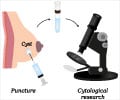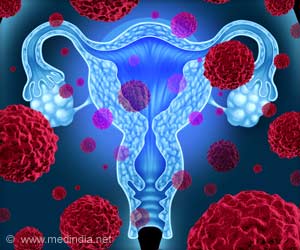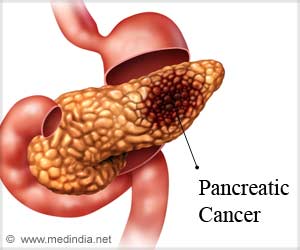Researchers from Mayo Clinic have found that having dense breasts, areas that show up light on a mammogram, is strongly linked to an increased breast cancer risk.
Researchers from Mayo Clinic have found that having dense breasts, areas that show up light on a mammogram, is strongly linked to an increased breast cancer risk. However, "why" does that happen still remains to be answered.
The researchers found the potential links by examining dense and non-dense tissue taken from the breasts of healthy volunteers.In the first study, they found that dense breast tissue contains more cells believed to give rise to breast cancer, compared to non-dense tissue.
"We found a dramatic difference in tissue composition between dense and non-dense tissue in the breast," said Karthik Ghosh, M.D., a Mayo Clinic breast cancer researcher and physician who led one study.
In a second study, researchers also found that dense breast tissue has more aromatase enzyme than non-dense tissue.
Study's lead investigator, Celine Vachon, Ph.D, said that this is significant because aromatase helps convert androgen hormones into estrogen, and estrogen is important in breast cancer development.
"If aromatase is differentially expressed in dense and non-dense breast tissue, this could provide one mechanism by which density may increase breast cancer risk," Dr. Vachon said.
Advertisement
Dr. Ghosh said that examination of healthy women is important because most prior studies of breast density have looked at tissue taken from women with known breast disease. Sixty women, age 40 to 85, allowed the researchers to take eight core-needle biopsies from their breasts; none had a history of breast cancer.
Advertisement
Dr. Vachon and her colleagues looked at aromatase expression within cells in both dense and non-dense tissue.
Dr. Ghosh found that areas of density contained much more epithelium (6 percent) and stroma (64 percent) and much less fat (30 percent), compared to non-dense tissue that contained less than 1 percent epithelium, about 20 percent stroma, and almost 80 percent fat.
"This shows us that both the epithelium and stroma contribute to density, and suggests that the large difference in stroma content in dense breast tissue may play a significant role in breast cancer risk," Dr. Ghosh said.
She also looked at lobular involution, a decrease in the size and number of milk ducts that has been associated with decreased breast cancer risk, and found that 85 percent of non-dense tissue had complete involution compared to 35 percent of dense tissue.
Dr. Vachon and her team examined expression of aromatase in the biopsy samples and found that the stromal cells in dense breast tissue had more aromatase and intensity of expression in dense tissue, compared to non-dense.
They say these findings may help explain why women with greater proportion of dense breast tissue are at greater risk for breast cancer than women with little or no density.
"These are initial findings from one of the first attempts to study breast density at the level of healthy tissue. It doesn't explain everything yet, but is providing really valuable insights," Dr. Ghosh said.
The studies have been presented at the Cancer Therapy and Research Center-American Association for Cancer Research (CTRC-AACR) San Antonio Breast Cancer Symposium.
Source-ANI
SRM














